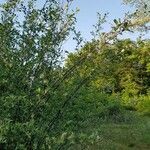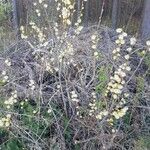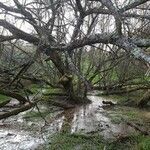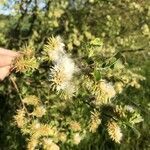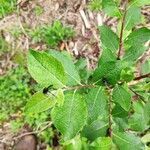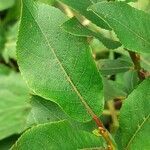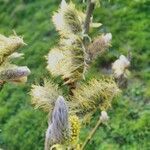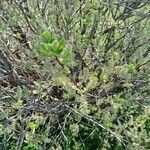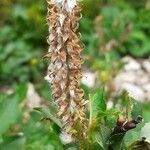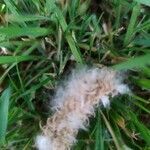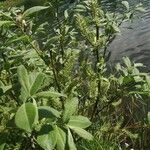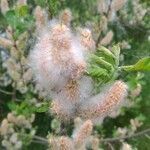Plants 0.2-4 m. Stems: branches reddish brown, not glaucous, (slightly glossy), pilose; branchlets yellow-brown or red-brown, villous or pilose. Leaves: stipules foliaceous, apex acute to acuminate; petiole convex to flat, or shallowly grooved adaxially, 2-6(-9) mm, pilose or villous adaxially; largest medial blade narrowly to broadly elliptic or narrowly ovate to ovate, 25-92 × 10-45 mm, 1.5-2.6(-3.4) times as long as wide, base convex, cuneate, or rounded, margins slightly revolute or flat, shallowly serrulate or entire, apex acuminate, acute, or convex, abaxial surface glaucous, sparsely pubescent, hairs wavy, adaxial dull to slightly glossy, pilose, sparsely pubescent or glabrous, midrib hairy, (hairs white and ferruginous); proximal blade margins entire or finely serrulate; juvenile blade sometimes reddish, sparsely pubescent abaxially, hairs white, sometimes also ferruginous. Catkins flowering as leaves emerge; staminate slender, stout, or subglobose, 14.5-34.5 × 8-12 mm, flowering branchlet 1-7 mm; pistillate moderately densely or loosely flowered, slender or stout, 21-59 × 6-16 mm, flowering branchlet 1.5-9 mm; floral bract brown or bicolor, 1.2-1.8 mm, apex acute to rounded, abaxially glabrate to hairy, hairs straight to wavy. Staminate flowers: adaxial nectary oblong or square, 0.3-0.7 mm; filaments distinct or basally connate, glabrous; anthers purple turning yellow, 0.4-0.6 mm. Pistillate flowers: adaxial nectary square or obovate, 0.3-0.6 mm, usually shorter than stipe; stipe 0.4-1.2 mm; ovary pyriform, glabrous, beak gradually tapering to styles; ovules 12-22 per ovary; styles connate (sometimes distinct 1/2 their lengths), 0.2-0.5 mm; stigmas flat, abaxially non-papillate with rounded tip, or broadly cylindrical, or 2 plump lobes, 0.2-0.32-0.44 mm. Capsules 3.2-8 mm. 2n = 38.
More
Shrubs to 2 m tall. Branchlets yellowish, chestnut colored, or grayish black, at first pubescent, glabrescent or subglabrous. Stipules obliquely ovate or semicordate, margin serrate; petiole 2-5 mm, usually shorter than stipules; leaf blade ovate, oblong, or oblong-obovate, 2-8 × 1-4 cm, abaxially greenish, adaxially green, base cuneate to cuneate-rounded, margin serrulate, apex shortly acuminate. Flowering coetaneous. Catkins 2-4 cm; peduncle tomentose, with leaflets; bracts brownish, oblong, densely grayish white villous. Male flower: stamens 2; filaments distinct, rarely united at base, glabrous; anthers yellowish. Fruiting catkin elongated. Female flower: ovary ovoid, glabrous, shortly stipitate; style conspicuous, sometimes 2-cleft; stigma short, 2-lobed. Capsule green or brown, glabrous. Fl. May-Jun, fr. Jun-Jul. 2n = 35, 37-39.
A dense shrub. It grows 1.5 m high and spreads 2 m wide. The twigs become purple in the second year. The leaves vary from oblong to rounded. They are dull green above and waxy underneath. The small plump flower catkins appear with the leaves.
Sandy and gravelly river bars and floodplains, lakeshores, sand dunes and blowouts, Dryas tundra, alpine sedge meadows, balsam poplar thickets, openings in upland spruce-willow forests; at elevations up to 1,200 metres.
More
It is a warm temperate plant. It grows naturally in mountain areas in central Europe. It suits hardiness zones 5-9.
